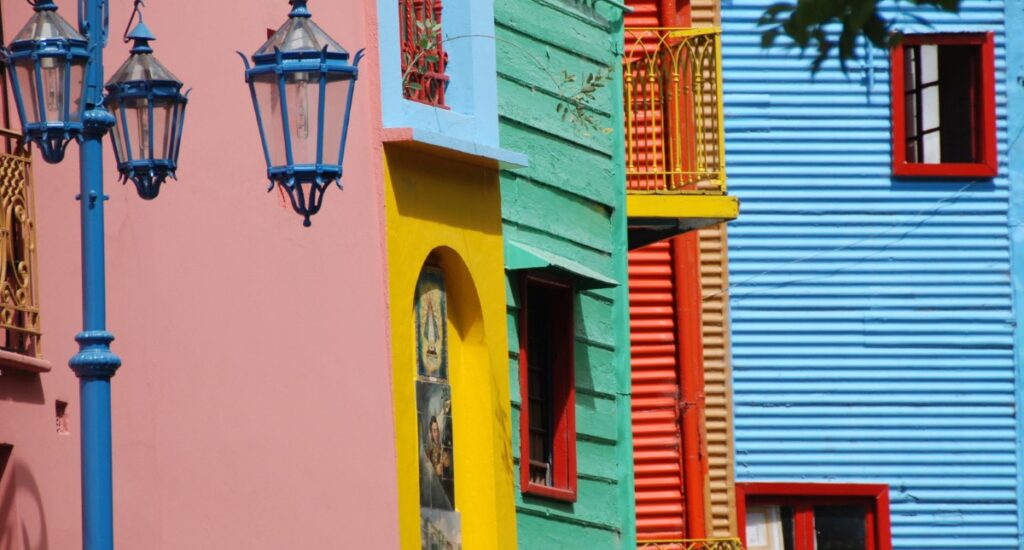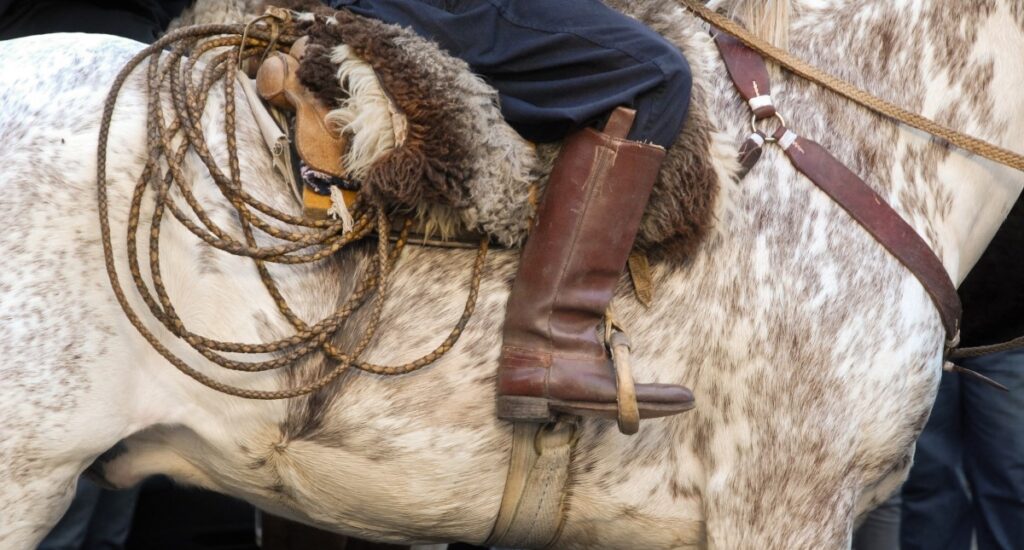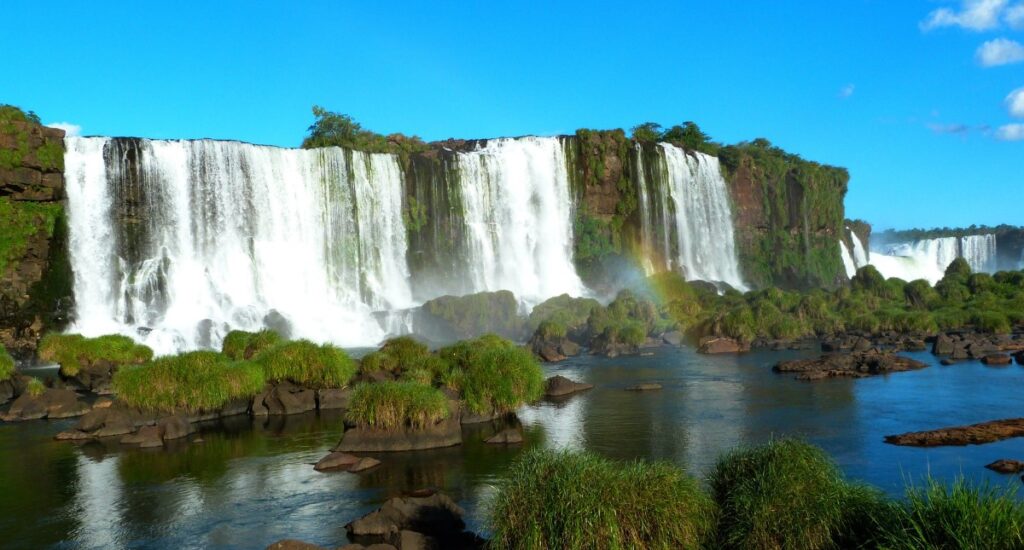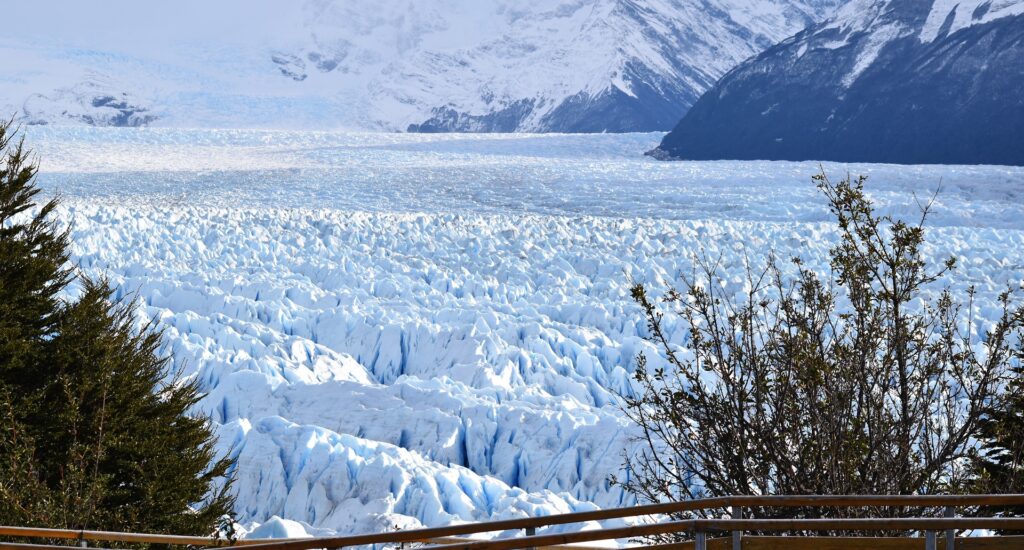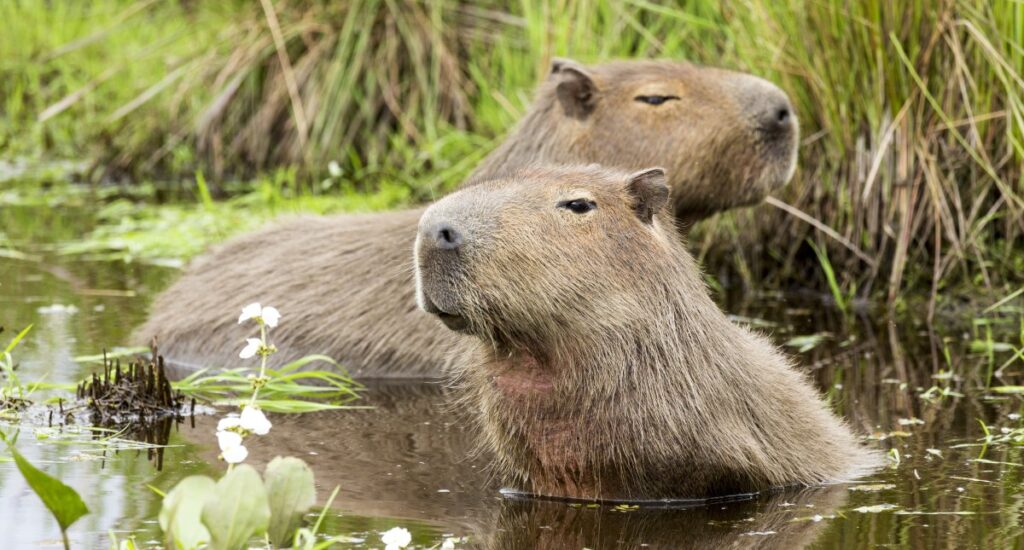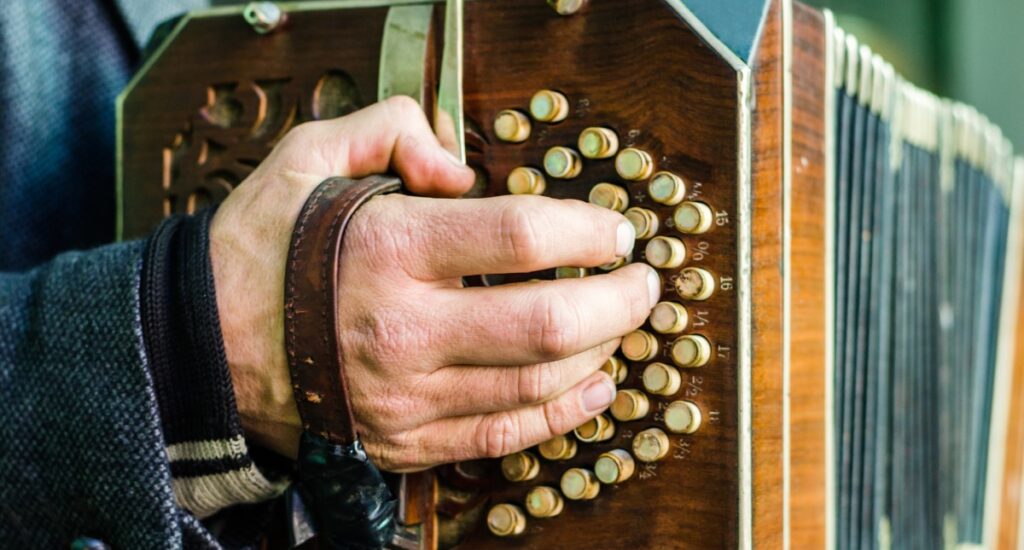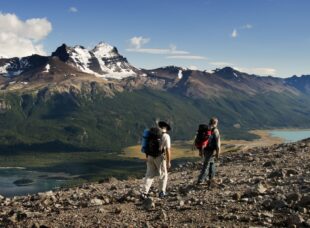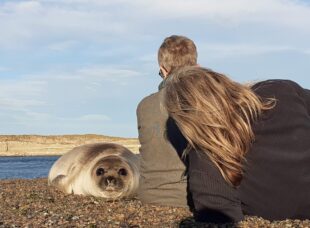Overview
Argentina is a vast country that spans a rich diversity of regions, each with their own identity and cultural heritage. Argentines are a proud nation with deeply ingrained traditions mixed in with a plethora of immigrant influences, mainly from Europe. The gaucho is a revered character who represents strength, resilience, endurance and skill and the costume and traditions surrounding gaucho culture are absolutely fascinating. From sensual Tango music and dance to superb quality beef and red wine, from roaring waterfalls to glittering blue glaciers, Argentina is a sophisticated nation that yet harbours some striking contrasts and surprises. As you move away from the urban chic of the capital, the scenery becomes wilder and the landscapes more breath-taking where wildlife and cultural heritage takes centre stage.
The Northern half of the country is host to the superb natural wonder of Iguazu Falls that meets with the borders of Brazil and Paraguay. The surrounding Atlantic rainforest though is also inhabited by some truly unique wildlife species such as capybara, anteaters, chinchilla and caiman in its wetland areas, striving now for national park status for protection. Nestled along the Andes are indigenous speaking Quechua communities and adobe villages built by Spanish conquistadores dotted with deep canyons, giant cacti and lush vineyards. As you head further south the tropical climate gives way to cooler temperatures in national parks filled with lakes, rivers, glaciers and granite peaks as well as remote rugged Atlantic coastline scattered with colonies of marine mammals such as elephant seals and birds such as condors and penguins, finally ending at Cape Horn, the southernmost point before Antarctica.
Food & Drink
Argentinean cuisine can be summarised as simple, fresh and full of flavour. There are some absolute classic staples, with a wonderful range of mouth-watering regional dishes on offer, as well as fine dining opportunities to rival the world’s best restaurants. When eating out in well-established restaurants and cafes, expect to pay lower prices to the UK due to a weak peso, and even more affordable meals can be found in informal local restaurants and markets where the locals eat.
The humble empanada, a cheese-based pastry filled with vegetables, meat or fish, is likely to feature heavily during your stay and often served as a starter before dinner or as a snack. Argentines love an asado, a traditional barbeque where whole sides of meat are put on a giant rack and slow-grilled, often accompanied by chorizo sausage. Beef is of course ubiquitous here as a result of traditional cattle ranching and the steak here is certainly some of the best in the world. Further south, lamb is much more common and equally as good. South America may not be thought of as an easy food destination for vegetarians and vegans and it’s fair to say Argentinean’s generally love to eat meat, but alternative choices are becoming easier to find. Thanks to European influences, Italian food is popular here, so pasta dishes are well prepared and delicious. The locals have a very sweet tooth and ‘Dulce de Leche’, a sweet caramel made with milk appears in lots of desserts. Ice-cream is a local obsession in Buenos Aires with parlours featuring a myriad of flavours found on every street corner and afternoon tea wouldn’t be the same without ‘alfajores’, a type of shortbread biscuit sandwiched together with, you guessed it, dulce de leche.
Mendoza is a wine grower’s paradise, with sprawling lush valleys aided by year-round warm temperatures and a low pest concentration. It produces the country;s most popular variety using the Malbec grape, a delicious rich fruity red that goes so well with the excellent beef here. The vineyards are experimenting though with other grape varieties though here such as Bonarda for some interesting local discoveries. Also the high altitude wineries further north around Cafayate produce some excellent white wines too, often based on Torrontes grape varieties. They also produce some great local beers in this area, such as Quilmes. Maté is a local brew, rather like a bitter green tea, that you will see locals sipping from gourd shaped mugs through a metal straw, especially up in the north-west. If you like fruit, then try a licuado – basically a fresh fruit milkshake.
When to Travel
Argentina is a destination that can be enjoyed year-round. As a general guide, we think the best time to travel falls between October and early May. As Argentina stretches from the tropics far down into the Southern Hemisphere, the weather patterns follow the opposite seasonal conditions found in Europe. Warmer summer months begin in November and extend into February, while the cooler winter months fall between June and August (a time when rainfall can also take a spike). Patagonia lodges tend to shut down from June to mid October, excepting ski resorts around Bariloche and San Martin.
Peak summer travel months of December, January and February must be booked far in advance and it is worth noting that at this time of year prices are higher, rooms are often scarce and cities can feel very crowded. These months also coincide with the local Argentine summer holidays, a time when locals jump at the opportunity to pack up and head off to explore their stunning country in droves.
Some more specific regional information:
Iguazu & Ibera: Climate is hot and humid generally. Winter (Jun-Aug) is cooler, although the water level of the falls also tends to be lower. April or May are the best months at Iguazu for water flow after the Nov-Mar showers but still impressive year round. In Ibera, summer (Dec-Feb) can be intensely hot yet ideal to see migratory birds. Fall (Mar-Jun) is the low season for the region and a particularly good time to travel as the more timid wildlife comes out of hiding. Spring (Sep-Nov) is wettest but also breeding season and the vegetation is lush and green.
Salta & North-West: A warm and dry climate year round. Winter and Spring (June to November) is the best time to travel. In winter rains are less frequent and the tropical temperature drops a few degrees (nights are downright cold). In summertime, temperatures can rise above 40 degrees Celsius.
Mendoza: Sunny and dry most of the year. November through April is the big draw with vines green. The “vendimia” or harvest festival takes is held annually the first Saturday of March. April and May offers beautiful autumn colours.
Peninsula Valdes: Peak time for wildlife is Oct-Dec. Southern Right Whales are present Jun-Dec, peaking in October. Orcas arrive Sep-Apr and best spotted close to sealion colonies. Magellanic penguins nest Sep-Mar and vast colonies of sealions and elephant seals can be observed year round, with breeding taking place Dec-Mar.
Patagonia: Oct-Apr is the best time for Patagonia generally with the busiest months Nov-Feb. Temperatures can vary wildly from warm to almost freezing even in summer. Spring blooms and autumn colours make the shoulder season months of Oct and Apr great choices for visiting. Be prepared for all seasons!
Practicalities
FLIGHTS
Argentina is served by daily direct flights from London Heathrow to Buenos Aires with British Airways. The journey takes just under 14 hours. If you are visiting Iguazu Falls or combining a Wine discovery journey of Mendoza with Santiago Wine Valleys in Chile, then you can also combine with British Airways direct flights to or from Sao Paulo and Santiago.
A host of airlines also fly into Buenos Aires via various European hubs, such as Madrid, Paris and Amsterdam, whilst LatAm also offer routes via São Paulo in Brazil. Indirect flights can cost a little less, and they often take between 18-20 hours in total to reach Buenos Aires.
Domestic flights are necessary due to the large distances between destinations and are operated by national carrier Aerolineas Argentinas or by LatAm. There are two circular routes that don’t require you to always fly via Buenos Aires which make combining destinations easier: Iguazu, Salta and Mendoza in the north; Bariloche, Calafate, Ushuaia and Peninsula Valdes in the south.
VISAS
UK passport holders do not require a visa to enter Argentina, providing they depart the country again within 90 days. Other nationalities should check entry requirements with the embassy. Passports need to be valid for the duration of your stay, and no further period of validity is required beyond the length of your trip.
You will be handed a ‘tourist card’ on arrival which is extremely important to keep safe. Along with passports, the immigration paper may be requested upon each hotel check-in, and is required to leave the country.
If you are flying to Argentina via the USA, you need to apply online for an ‘ESTA’ electronic travel authorisation, even if you are only in transit. This currently costs $21 per person, is valid for two years and should be applied for on the official Department of Homeland Security website: https://esta.cbp.dhs.gov/esta/
HEALTH
You should contact your GP before travelling to all destinations. We can provide some general guidelines; however, we are not medically trained so it is essential to speak to a medical professional well in advance of your trip:
Zika Virus: there is no known risk of Zika in Argentina.
Yellow fever certificate: if you are arriving from countries with yellow fever, you may be asked to produce a certificate of vaccination against the disease (for a list of countries affected visit www.fitfortravel.nhs.uk). No certificate for yellow fever is required for Argentina.
General: it is recommended that your general boosters for Diptheria, Polio, Tetanus and Hepatitis A are up-to-date before travel. We recommend purchasing comprehensive travel insurance as soon as you have booked your holiday and declare any pre-existing medical conditions to your insurer – some may be able to provide cover for an additional premium.
SAFETY
While Argentina enjoys low levels of crime, you should exercise caution in larger cities as you would in any capital city and take a taxi back to your hotel after dark. You can also check the UK Foreign & Commonwealth Office website for the latest advice before you travel.
MONEY & TIPPING
Argentina is one of the most developed, stylish and safe countries to explore in Latin America. Prices are largely lower at present than those you’d expect to pay in the UK. Dependent heavily on widely varying currency values, while some remote regions such as Patagonia and Peninsula Valdes can be more expensive. The preferred currency is the Argentine Peso ($ARS) and at the time of writing £1 (GBP) is worth roughly $50 (ARS). Notes of varying denominations come in multiples of $2 to $1000 (ARS), and smaller value coins or centavos are available in multiples of 5 or $1 or $2 (ARS) but are rarely enough to cover small purchases, for example a decent coffee typically costs around $15 (ARS).
It can be difficult to exchange £GBP in remote areas, but ATMs and money exchange facilities are widely available in towns and cities. If you do decide to take some cash, better to take it in USD rather than GBP. Warnings about ATM scarcity are no exaggeration in some rural locations – for example small airports in Patagonia do not have ATMs. If you are eating in a hotel restaurant it is usually worth charging bills to your room, as payments made in $USD are often exempt from taxes for foreigners and can be settled by credit card. It is refreshing that haggling is uncommon outside of markets. While tipping is appreciated, it is not expected as fiercely as in other areas of the continent. Do check your bill in restaurants, as guideline tips of 10% are occasionally already included in the bill.
HORSE RIDING
Horse riding can be a wonderful way to enjoy Argentina’s landscapes, but there are inherent risks involved with riding, anywhere in the world. Traditional cattle ranches are common, where you can ride out with the gauchos, who of course are a proud and hardy bunch who don’t wear helmets when they ride. Polo is also a popular sport here, although helmets are usually always worn, even by professionals. Wearing a helmet is highly recommended for your own safety – ask your guide if they are not automatically offered or consider taking your own if you have an extended stay at a riding estancia for a few days.
Travellers Code of Conduct
– We provide all of our clients with a “Travel Facts” document upon confirmation of your booking. This details useful facts and travel advice for your chosen destination, including restaurant recommendations, reading tips, basic language, cultural traditions, climate information and brief historical overviews. We feel that this offers a useful insight into the country you are visiting, and can help you interact with local residents in a more sensitive, well informed manner. Please try to take the time to read this information before your visit, if at all possible.
– A number of the countries in which we operate holidays are religious societies with a widely observed set of customs. Always respect these norms, particularly when visiting religious buildings.
– To the best of our knowledge, all of the hotels, lodges and camps within our portfolio operate stringent measures to minimise water usage. All of our destinations have issues with water supplies to a certain extent so feel free to raise any possible wastage should you encounter it during your stays, either with the accommodation or with us upon your return.
– Please ask before taking photographs of people, and respect their wishes should an individual not be happy to be photographed. We find that friendly requests and a smile are usually met with assent.
– Strive where possible to make your own contribution to environmental practices within the destination you are travelling. This might include minimising your electricity usage, avoiding smoking in protected areas, avoiding coral while snorkelling and safely disposing of all litter (recycling where possible).
– Where possible, try to purchase from local suppliers. This includes shopping for souvenirs, eating out in restaurants and booking further excursions during your free time. In areas where haggling is an accepted part of daily life, don’t become angry or offended if you are unable to obtain what you perceive as a fair price for an item. We emphasise to local suppliers that our clients should never be taken on unsolicited shopping trips, but if this does happen, try to retain your sense of humour, provide a firm refusal to participate and tell us about this on your return. We pass on all feedback from every trip undertaken with Holiday Architects to the relevant local suppliers, who share our commitment to travelling with sensitivity.
– Please don’t remove any indigenous items from their natural habitat and attempt to bring them back as a souvenir. This particularly applies to coral, shells, plants and food in the natural world, and to cultural artefacts and antiques.
– If you are unsure about anything relating to the above, please feel free to ask our local suppliers or your Holiday Architects specialist. All of these people either live or have travelled extensively in the country you are visiting and will be more than happy to offer their considered advice.



